LANGUAGE OF CARTOONS
by Geza HALASZ / Hungary

Graphics in the Babel of languages
People share the information – their news, thoughts and feelings – among themselves and not only in their mother tongue. There are thousands of channels for communication as the Vonnegut’s fictional character Kilgore Trout, the science fiction writer composed – we can communicate with farting and step dancing – although in this case with inhabitants from a distant planet.
The language is not only a communication but it can also separate. What I am just now writing in Hungarian language, it will be translated to English, so that I am able to present it to you. But it would be best to tell it in pictures…
.
“… since the beginning of the world, picture or drawing has the great advantage” – wrote Frigyes Karinthy (Hungarian writer, 1887-1938) with regard to pictograms coming out in those days – “of being independent of languages’ Babel: which is physical reality of man and of his deeds, that was the same in every parts of the world, and everyone understands if it is imaged. The headstrong development historian has been wrong when he reckons the Egyptian hieroglyphic-method as primitive phase of communication and conservation, one collateral descendant of this method is only what is called writing today: it survives as a whole and … it seems that it is given new life by virtue of nature of its essence in our century, rather than the world ever would dream about it.”
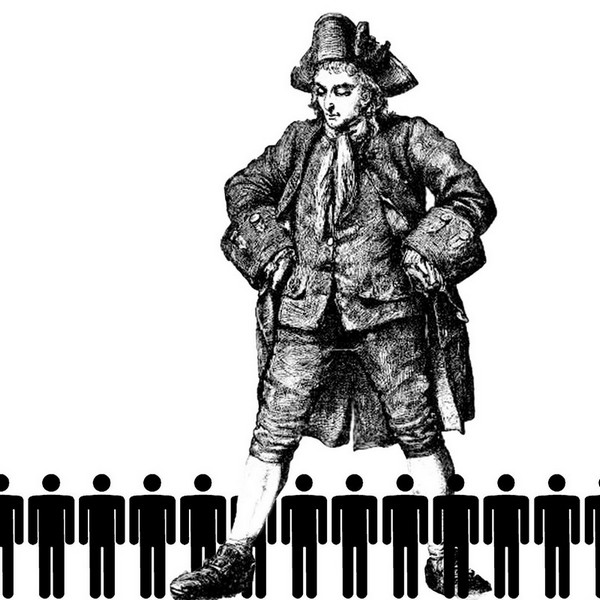 My cartoon with pictograms
My cartoon with pictograms
The cartoon does not communicate news or reports but offers an opinion through picture, tries to direct our thinking, doesn’t give an answer to be understood, only raises the opportunity of some answer, gets the wind up, asks and doubts. Therefore it needs, as all other art forms, the use of special, acting-on-mood and proper language.
Voices on the drawing paper
Gabor Devecseri (Hungarian poet, 1917-1971) wrote about the poem (but the same goes for the cartoon): “… the verse, makes music and besides that, it is just like an orchestra. And everyone has a voice in it. Intelligence has his own voice, moreover his own group of voices, let alone vast voices of association. These possible voices come forward to the reader in part equally, in the other part varying. Their number is almost unlimited. Now. There is, put it that way, a musician who knows about pictures everything from A to Z. There is a guy who knows everything about poem, meter or rhythm, and so on. I might add that there is a word order – guy, and it is not all that how much an inversion can state within a poem. If this sheet of music which has the same largeness in time as the telegram – which vainly wants to be brief, after all it is one melody, it is laid unfurled next to the telegram with the same length, namely the parts are written down one after another separately then that leads us on the road from Komarom to Budapest as Jokai (famous Hungarian writer) said about his own novels.”
A work of art – and this is especially true for humor – hits its recipient directly between the eyes. The greatness of information depends on degree of surprise in respect of information theory. This surprise is enhanced by gag, the punch line, but humor is not only this punch line itself. It would be quite a poor concept to narrow the humor’s world of a thousand colours to this joke only. Moreover the humor lies, to be prepared the punch line, in such a fictional story – or in such a context in case of drawing – that there is no need to speak out or highlight the punch line in the picture. It is enough to make a punch line and not to speak out. That is where the delicate wit begins which “prize” is a smile of comprehension instead of harsh laughter.
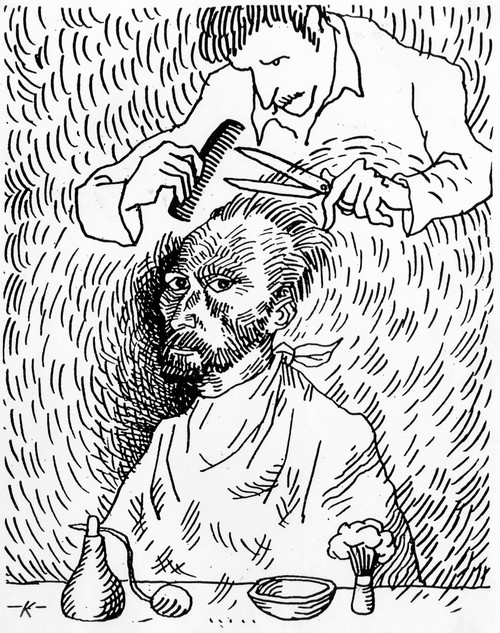 Cartoon by Tibor Kajan (HU) in van Gogh style
Cartoon by Tibor Kajan (HU) in van Gogh style
Humor is all about contrast. The things are shown as perverse or if our situation is awry then its colour and positive side is presented in it. The actuality can be said in many ways. The mere message to be communicated can be surprising. It can press or break taboos and sensitive subjects. It is also important how it approaches the subject – philosophically, from afar or from the frog perspective of common man. The cartoon’s element of surprise can be intensified with many small add-ins. While the language of pictograms is without style and fully comprehensible, the style of cartoon is talking too. We know some cartoonist who sends word in one or two lines and who draws the drawing paper full to the brim. There are meticulous realists and also those who sketch only the outlines.
The “great leap” in the history of cartoons’ language was Saul Steinberg’s art. Steinberg took the cartoon to new abstract level from the level of everyday phenomenal world by leaving out several needless elements in relation to substance of his drawings. His characters were general as far as was possible to generalize them, to abstract from the face, figure, and sometimes, of the gender of the character. The faces, that does not look like anybody and the regularly simple figures as children’s art are the most common depiction of humans and citizens. The revelation has nothing more and nothing less lines than are necessary to its reception and understanding.
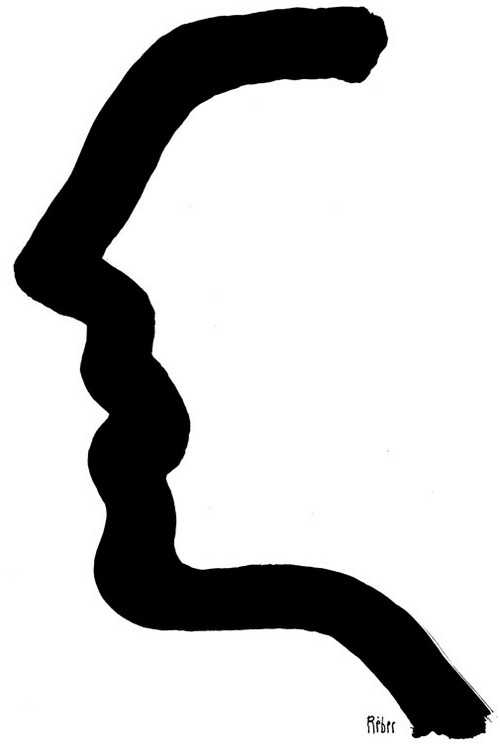 Laszlo Rebers (HU) one broad brush stroke caricature: outside peaceful, inside roaring face
Laszlo Rebers (HU) one broad brush stroke caricature: outside peaceful, inside roaring face
Redundancy is the rate of needless denotations in a message – according to the theory of information and coding. But this “needless” is considered only technically and in terms of channel sizing. The correct selection of this redundancy might be important in our daily life: in order to be intelligible the teacher’s lecture he/she makes even the Pythagoras’ theorem clear and lifelike with examples, stories, repetitions and pictures – with this the redundancy is increased. But for example if the teacher conducts gymnastic class – one, two – the redundancy is declined greatly: there the execution is important and not understanding. Playing with the redundancy of graphics can also be the means of cartoonist from simple brevity to the detailed enlargement. From extension of time and space to integration in a single picture. Either way, it can be beautiful whether it is simple as a folk song or ornate as a Bach fugue.
It is a piece of cake
I heard sometimes from my maths teacher that this resolving is “witty”, “spirited” or the deduction is “elegant”. Yes, there is such method in science which makes you smile; not an ironical smile but an appreciative smile. When we find a shorter, ingenious own way, an intuitive way instead of long deductions, usage of rehearsed formulas or common proof. The intuition, the more logical stroke of genius is not a matter of luck but it assumes certain knowledge.
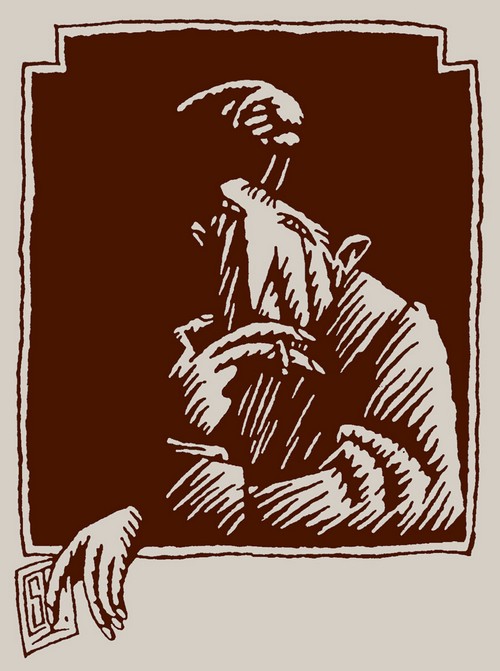 Drawing by Tamasz Csaszar (HU)
Drawing by Tamasz Csaszar (HU)
“… instead of “humor”, because it can cause confusion, “elegance” should be said, says Slavomir Mrozek, and that is inseparable from masterly knowledge, the perfect control of material and tools. This knowledge allows a little distance, seeing from the outside and liberates from customary rules. But this is not anarchist or mangy freedom but conscious and rule-proving. I feel my things under control so I can play with it for a moment like a cat with a mouse.”
Herbert Simon won the Nobel Prize for his success achieved in the area of thinking science in 1978 proving the rationality might prevail under restricted conditions when making a decision. Artists have perceived long ago that we are not rational beings, so more likely the way to our brain may well lead through the senses than through intellect or logic. Our irrational things are shown with derision of this irrationality in humor; so that for example you follow your erroneous thoughts until the end. Detail for detail, namely with the portraying of reality. The sentence “caricature is a mocking glass” is frequently asserted at the opening sessions of cartoon exhibitions. It is not true. Cartoon is a true mirror and the mirrored people and social phenomena are distorted. The humor reveals that we are ridiculous. “Let’s look at yourself”, said Tibor Kajan, Hungarian cartoonist at opening session of a cartoon exhibition. It is our fault that we are ridiculous. Leon Festinger named the shrinking feeling at taking a decision as cognitive dissonance. Had I done the right thing? On this basis Chaplin’s and other tough, extremely rational characters’ infallible attitude when they make a decision or an “ingenious” way out from a tight situation presented by one caricature can be named as creative dissonance. In the cartoons extremely – although it is infallible logical, moreover more logical than logical, after all – irrational attitude is presented.
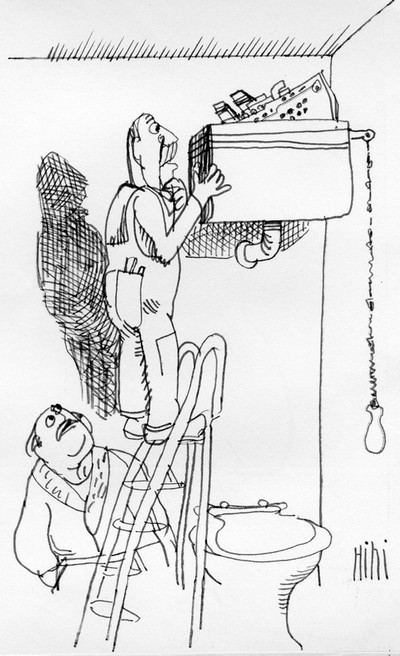 Andras Hegedus (HU) and the irrationality
Andras Hegedus (HU) and the irrationality
Sign Language
All information – even with a brevity of telegram – is open to misinterpretation in more ways or completely (I know it very well as a teacher). The cartoon is also susceptible to various interpretations. There are so many ways it could act to one spectator or another one even in the same cultural atmosphere while the cartoon can be interpreted at several abstraction layers. This may depend on the mood or immediate troubles of recipient. But it may turn upon the political stance: a broad-minded find a different meaning in it than a strait-laced spectator.
The meaning or interpretation – to be exact – depends not only on cartoonist and spectator (reader, interpreter) but also on environment: the cartoon takes on a new meaning if published in a given function, quality and political stance of a newspaper or being published next to a given article. There have been cases when my stand alone cartoon was located next to an essay with similar issue but conflicting orientation, furthermore as illustration of this article, thereby it made an opposite sense. There was another case when one of my cartoons with more general meaning made a different, new sense by unexpected occurrence of an event. (One morning the phone had rang, one of my friends called me. Geza, your drawing in today’s paper is a beautiful memorial. I couldn’t make heads nor tails of it as I had not seen the paper of the day yet. I soon found out that one of my drawings was in the newspaper on which one column falls out of line in a portico, in shoes, that is how it got to be. John Paul II died that week. I had drawn this picture weeks before and I never thought of such a parallel).
 Ratcho Ratchev’s (BG) maths signs
Ratcho Ratchev’s (BG) maths signs
The basic unit of language is a word and the basic unit of a sign is a letter. The language of a cartoon is definable different (if it is definable). It is certain that the graphical elements have more general meanings in a cartoon than can be described with one word or a sentence. If you draw a stick in the hands of a man striking another man, then the stick can represent violence, a bureaucrat or a dictator. Mona Lisa or Venus de Milo expresses beauty and you can depict love through flowers, the crossing as a cross, Russia (formerly Soviet Union) as a bear, the British through a lion. But Venus de Milo can represent a cripple and you can depict a fork through a spoon, the summation as a cross, the devil through an angel or a bear through a bear. Anything may come to your mind about anything. Or its opposite as well.
Humor is an appropriate combination of contrasts. And the cartoonist knows this. At the same time the cartoonist must know how many times Mona Lisa, Venus de Milo, the bear and the angel have been utilized already by many cartoonists what made that extremely dull. There are countless of hackneyed scenes – desert island, robber in ambush at a corner of street, revolutionist holding a flag, tamer’s head in the lion’s mouth, prison bars, cage, marionette and others. Theirs abstraction is cut out for utterance of cliches and we or our colleagues – cartoonists still use these banalities, perhaps that is why, every day. Even the derision of this generalisation can be the challenge for a real cartoonist especially when he “kill” the cliche with his own weapon and his own symbol. The cartoon is ingenious and “catchy” only in that case if its signal structure and message is unconventional and not cliched.
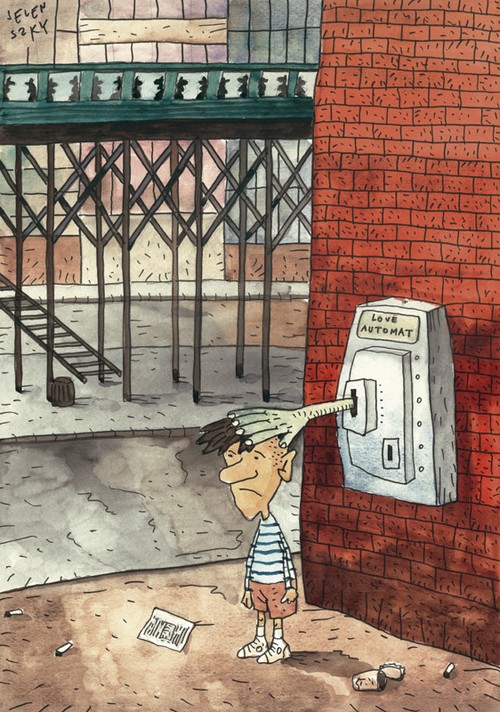 The world is inhuman – could be commonplace – displays brilliant drawing by Laszlo Jelenszky (HU)
The world is inhuman – could be commonplace – displays brilliant drawing by Laszlo Jelenszky (HU)
It is difficult to say because cliche is true most of time. However a lot of cliche is true only in terms of the phenomenon. When you get right down to it, if you reveal deeper truths and if you get at the meat it could be turned up that your generalisation is positively false. It is very difficult not only to see a punchline but to make the punchline and explain it. Humor would help us a lot: this illustrative and constructed graphical model demonstrates the ridiculousness of lies.
A language can be spoken as native or learned at the age of adulthood. At the same time you are born into a given culture, in a given place and time, what can be explained at most but you can feel it only indirectly – through arts. Our generation, artists and those who cultivate an interest in the arts, journalists, readers and of course cartoonists, learned a sign language, ‘reading between the lines’ in socialist era with which we could slip lynx-eyed custodian‘s notice. But clearly, these ‘custodians’ knew and left out of consideration the powerless critical intonation most of the time. They tried to create the image of this driven humor that there is liberty and the system needs criticism. There were jesters in the royal court who could not have to hesitate to tell the truth… One Hungarian cartoonist said that the ‘jester’ is good but the ‘court’ qualifier is disgraceful.
In Quotes
If a text has quotes around, there may be two reasons: it is a quotation or you deride something (or both).
You can use inverted commas if you want to tell a story or if you want to make your arguments more serious, efficient and easier to understand, in accordance with a generally accepted authority’s opinion. When you want to taunt you can also use quotation marks. You say that they say, you show the quotation marks by your forefinger and middle finger of both hands (with ditto marks) – namely I do not say it now, I have nothing to do with it.
The human intelligence, behaviour and way of living is between quotation marks in case of humor. It designs a scene, a thinkable or an unthinkable thing or truth to highlight the ridiculousness of our human weakness (which is not always ridiculous). You can utilize all trick invented in the history of humor from jest to satire, with the tools of absurd, grotesque, parody, sarcasm, travesty and many others.
 My meme about two geniuses
My meme about two geniuses
The quotation marks can be used in cartoon when you adapt works of the great masters in favour of your message. The meme is a fashionable concept nowadays. The burden of meme is heredity likewise the concept of gene, but in the cultural sense, not biological. Namely it is about cultural evolution or rather cultural mutation (memory + gene) in case of meme.
“But if you contribute to the world’s culture, if you have a good idea, compose a tune, invent a sparking plug, write a poem, it may live on, intact, long after your genes have dissolved in the common pole. Socrates may or may not have a gene or two alive in the world today, as G. C. Williams remarked, but who cares? The meme-complexes of Socrates, Leonardo, Copernicus and Marconi are still going strong”, said Richard Dawkins in his famous book The Selfish Gene.
When Marcel Duchamp added a moustache to the reproduction of Mona Lisa he created a cultural mutation of the original Leonardo’s meme.
No wonder that the computer and internet world domination brought into fashion this trend – mutation of memes. Graphic skills are not longer necessary for the use of graphics software, it is easy to put the words into Mona Lisa’s or Lenin’s mouth downloaded from the web, or to get the modern messages particularly transferring them to the middle ages or Victorian period. Of course you should announce your thoughts all over the world in a more cunning way. The use of the “top of the bill” – almost hackneyed, the best-known and the most famous works of art – can be of double-meaning. On the one hand it is easy way how to make your message more understandable using well-known pictures, on the other hand it taunts to the meme-genre because it assumes the knowledge of some book, picture and composition which is considered as top performance amongst myriad creations of human history – like for a running tourist – it would suffice to obtain the general learning.
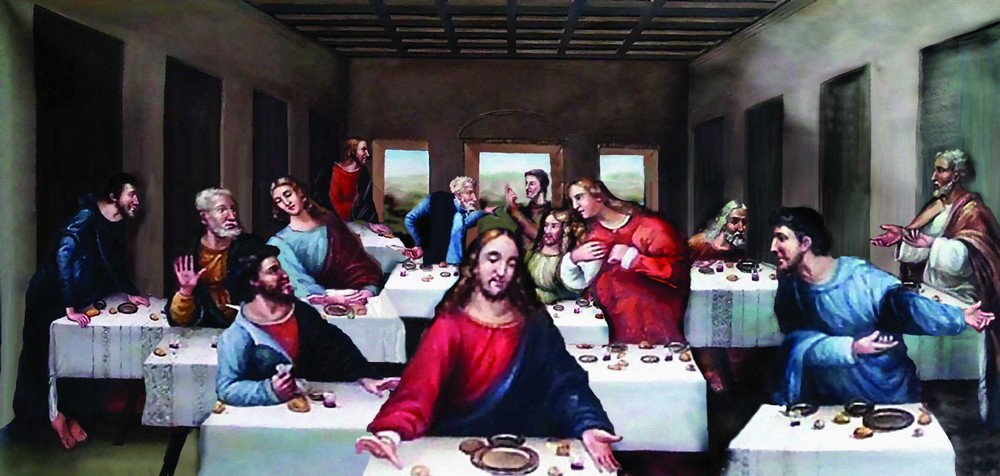 My giant poster of the Last Supper converted by computer
My giant poster of the Last Supper converted by computer
There is a new IT trend, the moving gif on technical basis, which consists of a few frames and it is a maximum 10 seconds of continuous computer animation. This is still nothing more, it is not a sequence nor comics, and not a cartoon. It is just that, as for example that the gents in hats really fall from the sky on Magritte’s Golconde picture or Toulouse-Lautrec’s dancers begin to dance. The publishing of these gifs is not possible any more in print.
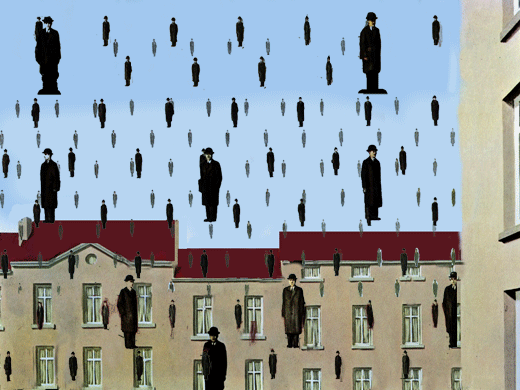 My movig gif based on image of Magritte
My movig gif based on image of Magritte
Put your mind back in order, order will be on your paper too
What does an artist do? In Kurt Vonnegut’s opinion: “An artist may feel overwhelmed by the chaos around him, but he can put into perfect order this piece of paper, this square of canvas, this block of stone.” However most of the cartoons are products for press, thereby for the market, they are often a commodity product, but many times you cannot find this order in those pictures. There are so many ‘cartoonists’ whose pictures do not contain any order, the order of thoughts and the order of visual representation altogether or separately. Neither on sheet of paper nor in their heads.
Most of readers – and the same can be said for editors – does not have visual culture. They can be carried off their legs many times with bad scribbles if there is a funny text below it. In this context the newspaper publishers would not even require anything from the point of view of profit but cheery pictures exonerating so many lines. There are few newspapers with editors who deliberately intend on fulfilment of cartoon’s real function and give place for the graphic journalism.
The world has really changed in our generation. The world system has been altered again, it has obtained a shape and the mass communication holds the world in its palm, the values considered to be constant are changing. And the technology! In these days the printing press retreats continuously, we turn the pages less and less and we click more and more. Internet opens not only new technical ways but much more and freer publication possibilities. It is more widely read than a newspapers, moreover a cartoonist can get a name with one single cartoon. I have the possibility to share my drawings not only with the small fellowship but with the cartoonists’ profession all over the world. It is far more effective for newspapers to buy cartoons from agencies which look for and sell our works without geographical boundaries. Cartoon exhibitions are being open more often, the artists are working not only for press but as well for the galleries.
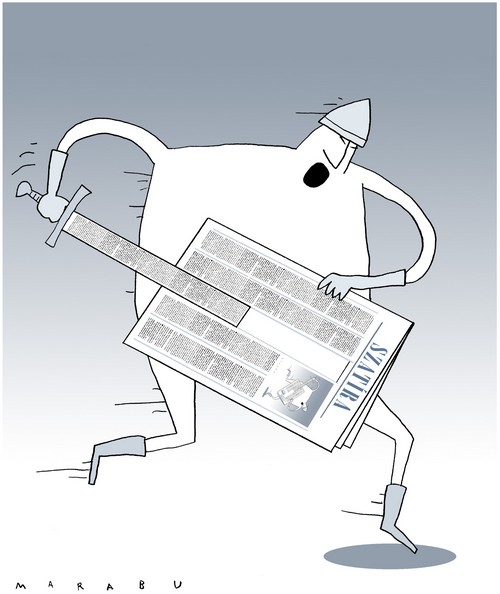
Satire by Marabu (HU)
We, cartoonists – here, in Hungary as well – we have argued again and again on that duality which is bounded by market and art: does Smith’s invisible hand, the law of supply and demand or the claim of artistic representation determine the (creative) work of a cartoonist? Does it make sense to talk about the language of cartoons in illiterate ambience?
Geza HALASZ
(author of the article is a renowned Hungarian satirical visual artist, cartoonist and web graphic artist. He is the President of the Section of cartoonists of the National Union of Hungarian Journalists)
*****
